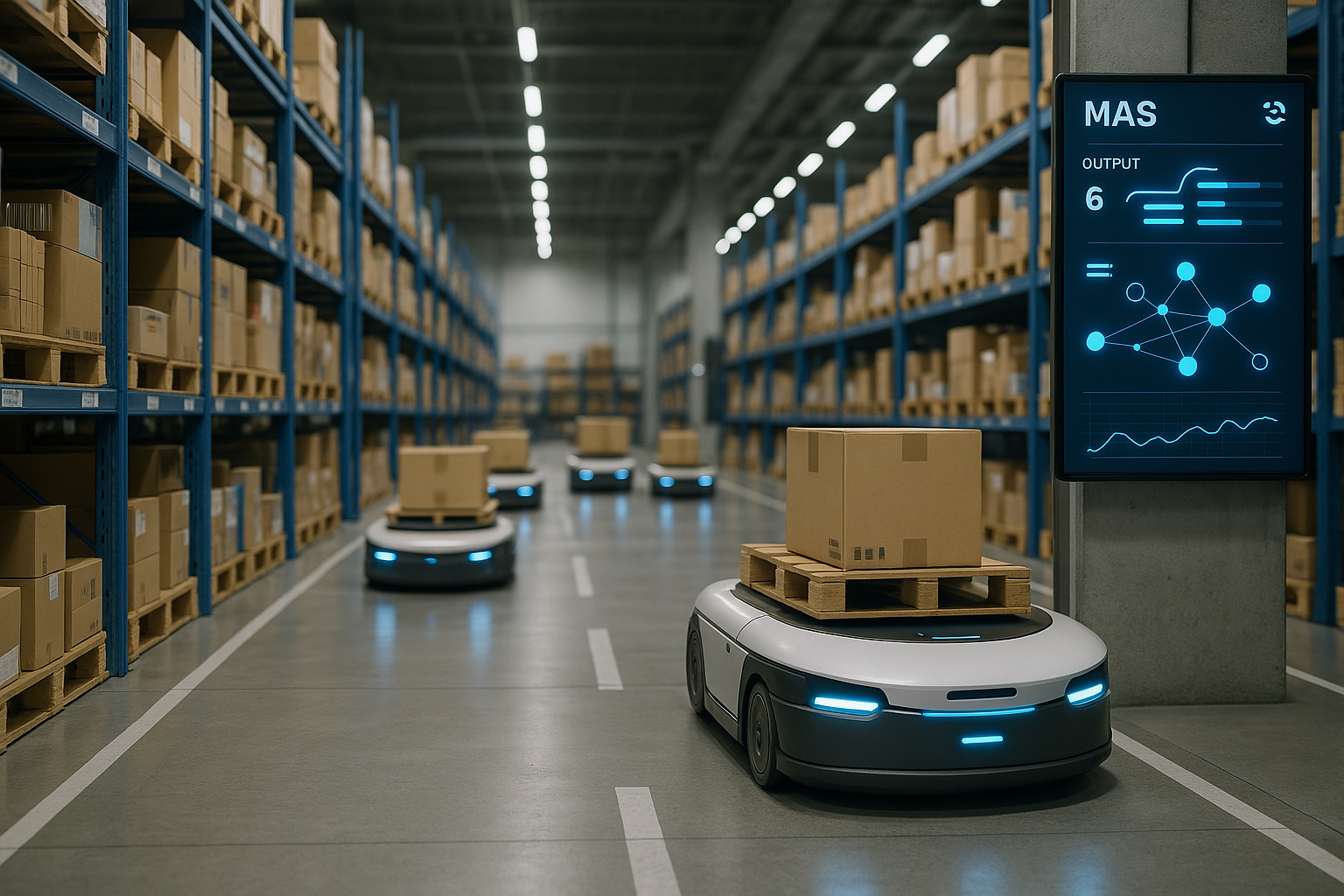How Our Multi-Agent System Helped Save Infrastructure Investment
read 4 mins | written by: Adam Jiang

When businesses consider deploying Autonomous Mobile Robots (AMRs), one of the biggest concerns isn’t just the hardware—it’s the infrastructure. High-spec servers, tightly managed networks, and intensive centralized control systems often create a steep barrier to entry. But what if your automation system didn’t need that heavy infrastructure in the first place?
At Syrius Technology, we've designed a different approach—powered by Multi-Agent Systems (MAS) and orchestrated through our intelligent platform, FlexGalaxy.AI. This architecture fundamentally changes how AMRs operate, collaborate, and communicate—leading to significant cost savings and faster deployments.
Understanding Multi-Agent Systems in Real-World Automation
An agent in our system is a relatively independent unit—like an AMR—that can perceive its environment, maintain its own state, and make decisions accordingly. It doesn’t need constant external instructions; it can act autonomously within a defined scope.
A Multi-Agent System (MAS) takes that autonomy a step further. It organizes multiple agents (robots) within a shared workspace, allowing them to collaborate intelligently while situated in real-world environments. Each agent retains its autonomy, but they are also part of a coordinated ecosystem—working together to achieve broader operational goals.
FlexGalaxy.AI – Task-Level Intelligence, Decentralized Execution
Traditional AMR systems often rely on centralized servers to constantly provide real-time instructions, track robot positions, and reroute as needed. This creates a dependency on high-bandwidth, low-latency Wi-Fi networks and powerful centralized computing—which adds to the total cost of ownership and complexity of deployment.
In contrast, FlexGalaxy.AI takes a smarter, more scalable route. Here's how:
-
Each AMR is self-sufficient: It can plan and route itself independently, based on its local perception and assigned task.
-
No constant server communication needed: Once a task is assigned, the robot determines its own steps to complete it. There’s no need for step-by-step commands from a central system.
-
Decentralized rescheduling: If re-planning is needed, FlexGalaxy.AI coordinates only at the task level, adjusting assignments for groups of AMRs without micromanaging individual moves.
-
Event-driven communication: Robots communicate only when necessary, reducing network traffic and dependency.
The Infrastructure Impact: Fewer Servers, Less Network Strain
This MAS-based approach means companies don’t need to invest in:
-
Expensive high-density Wi-Fi infrastructure
-
Real-time, centralized path-planning servers
-
Continuous data streaming setups
Instead, businesses can rely on standard wireless connectivity (even portable Wi-Fi modules) and deploy AMRs in low-infrastructure environments, such as older warehouses or temporary logistics hubs.
Scalable, Reliable, and Cost-Efficient
By decentralizing control and empowering each AMR with real-time decision-making, we’ve made automation lighter, faster, and more affordable. Our clients have been able to scale operations quickly without waiting for IT infrastructure upgrades or investing in complex server setups. In short, MAS isn’t just a robotics architecture—it’s an infrastructure-saving strategy.
Conclusion
With FlexGalaxy.AI and our Multi-Agent System architecture, we’re proving that the future of automation doesn’t have to come with a heavy price tag. You can gain the benefits of a smart, dynamic AMR fleet without the burden of building and maintaining expensive infrastructure.
If you're exploring automation and want to start lean while scaling fast—let’s talk. Your robots are ready to work smarter. We’re here to make sure they can.